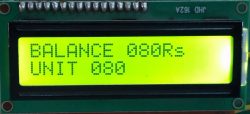Table of Contents
What is Transducer?
Definition of Transducer: The transducer is a device that is used to converts a physical identity to be measured into an equivalent electrical signal (voltage or current).
A transducer is also called as a pick-up element. It contains two parts that are closely related to each other i.e. the sensing or detecting element and the transduction elements.

According to another definition of transducer can be given as a device, which when actuated by the energy in one form, supplies energy either in the same form or in another form to a second transmission system.
Examples of transducer
- A mechanical force or displacement being converted into an electrical signal.
- A thermistor reacts to temperature variations.
- A photo cell changes in light intensity.
- Measurement of electrical noise.
- Telemetering system—when input and output are in electrical form.
Characteristics of Transducer
Sensitivity. It can be defined as the ratio of the incremental output and the incremental input. While defining the sensitivity, we assume that the input-output characteristic of the instrument is approximately linear in that range.
Range. The range of the sensor is the maximum and minimum values of applied parameters that can be measured.
Precision. The concept of precision refers to the degree of reproducibility of a measurement.
In other words, if exactly the same value were measured a number of times, an ideal sensor would output exactly the same value every time. But real sensors output a range of values distributed in some manner relative to the actual correct value.
Resolution. The smallest difference between measured values that can be discriminated. For example, it corresponds to the last stable figure on a digital display. This specification is the smallest detectable incremental change of the input parameter that can be detected in the output signal. Resolution can be expressed either as a proportion of the reading (or the full-scale reading) or in absolute terms.
Accuracy. The accuracy of the sensor is the maximum difference that will exist between the actual value and the indicated value at the output of the sensor. Again, the accuracy can be expressed either as a percentage of full scale or in absolute terms.
Linearity. The linearity of the transducer is an expression of the extent to which the actual measured curve of a sensor departs from the ideal curve.
Classification of Transducers
Transducers may be classified according to their application, method of energy conversion, nature of output signal, etc. However, a sharp distinction in the classification is difficult and often results in overlapping.
Transducers can be classified as:
- Active and Passive Transducers
- Analog and Digital Transducers
- Primary and Secondary Transducers
- Transducers and Inverse Transducers
- According to Transduction Principle
Active and Passive Transducers
Active Transducers
These transducers do not need any external source of power for their operation. Therefore they are also called as self generating type transducers. The active transducers further classified as.
- Photovoltaic
- Thermoelectric
- Piezoelectric
- Electromagnetic
The active transducers are self-generating devices which operate under the energy conversion principle.
At the output of active transducers, we get equivalent electrical output signal e.g. temperature to electric potential, without any external source of energy being used.
Passive transducers
These transducers need the external power supply for their operation. So they are not “self-generating type” transducers.
A DC power supply or an audio frequency generator is used as an external power source.
These transducers produce the output signal in the form of variation in resistance, capacitance or some other electrical parameter in response to the quantity to be measured.
Analog and Digital Transducers
The output of the analog transducers is in the analog form that means it is a continuous function of time. The example of analog transducers is a thermocouple, LVDT, strain gauge, etc.
The output of the digital transducers is in the digital form that means it is in the form of digital pulses discrete in time. These pulses from a unique code for each value sensed.
Primary and Secondary Transducers
Some transducers contain the mechanical as well as electrical devices. The mechanical device converts the physical quantity to be measured into a mechanical signal. Such mechanical devices are called as the primary
Transducers and Inverse Transducers
Tansducers converts non-electrical quantity to electrical quantity while inverse transducers convert electrical quantity to a non electrical quantity.
According to Transduction Principle
Capacitive transduction: In the case, the measurand is converted in the capacitance.
Electromagnetic transduction: In this transduction, the measurend is converted to the voltage induced in a conductor by the change in the magnetic flux, in the absence of excitation. It is a self-generating transducer.
Inductive Induction: In inductive induction, the measurend is converted into a change in the self inductance of a single coil. It is achieved by displacing the core of the coil that is attached to a mechanical sensing element.
Piezoelectric Induction: In this indiction, the measurand is converted into a change in electrostatic charge q or voltage v generated by crystals when mechanically it is stressed.
Photovoltaic Transduction: In photovoltaic transduction, the measurand is converted to the voltage generated when the junction between dissimilar materials.







